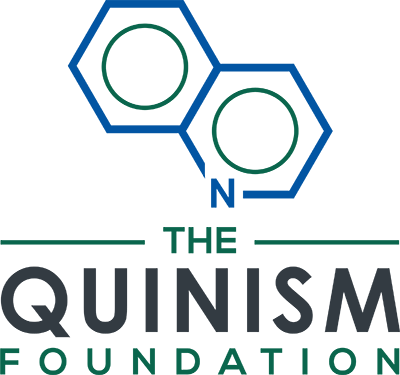The Quinism Foundation Shares Its Concerns that the GlaxoSmithKline (GSK) Antimalarial Drug Tafenoquine is Neurotoxic
The Foundation has Shared with GSK its Report Submitted to FDA in Advance of the July 12, 2018 Meeting of the Antimicrobial Drugs Advisory Committee at Which New Drug Application (NDA) 210795 Will be Considered
WHITE RIVER JUNCTION, VT. (PRWEB) JULY 10, 2018
The Quinism Foundation has sent correspondence to Mr. Evan Berland, Director, U.S. Corporate Communications, GlaxoSmithKline (GSK), sharing its concerns for the safety of the new antimalarial drug tafenoquine. The foundation has also shared with GSK a report, outlining the foundation’s concerns and recommendations in detail, submitted to the U.S. Food and Drug Administration (FDA) in advance of the July 12, 2018 meeting of the Antimicrobial Drugs Advisory Committee. This meeting will consider GSK’s New Drug Application (NDA) 210795 for tafenoquine, 150 milligram tablet, for the proposed indication of the radical cure (prevention of relapse) of Plasmodium vivax malaria.
“Tafenoquine is a member of a class of drug known as 8-aminoquinolines found during World War II-era studies to be uniformly neurotoxic,” said Remington Nevin, MD, MPH, DrPH, executive director of The Quinism Foundation. “A leading researcher involved in testing of this class of drug in rhesus monkeys has noted ‘all of nearly one hundred and forty 8-aminoquinolines examined… produce rather remarkable and highly specific lesions in the central nervous system [CNS].’” [1]
“Publicly-available data support a conclusion that tafenoquine shares the liability to CNS neurotoxicity of related 8-aminoquinolines,” said Dr. Nevin, “and thus that the drug can cause permanent adverse effects that reflect the localization of this neurotoxic injury. For example, gastrointestinal adverse effects from tafenoquine, including nausea and abdominal pain, are fully consistent with evidence of CNS neurotoxicity to the dorsal motor nucleus of the vagus caused by the related 8-aminoquinoline pentaquine observed when this drug was tested in rhesus monkeys.” [2,3]
“Tafenoquine has itself been shown to be neurotoxic in vitro and to be more neurotoxic than mefloquine,” said Dr. Nevin. [4] “Publicly-available preclinical in vivo neurotoxicity data on tafenoquine is limited to that collected in a rat model — a model well-described in the literature as insufficient to rule out neurohistopathologically-significant CNS neurotoxicity observed in primates caused by other members of the 8-aminoquinoline class.” [5,6]
In its correspondence, Dr. Nevin noted that, “The Quinism Foundation opposes approval of the NDA on grounds of safety.” However, Dr. Nevin also noted, “Should the FDA nonetheless approve the NDA, the foundation has recommended development of a robust Risk Evaluation and Mitigation Strategies (REMS) program, to include a boxed warning, restricted distribution, and Phase 4 study commitment.”
“Should the Advisory Committee recommend for approval,” said Dr. Nevin, “The Quinism Foundation recommends a boxed warning advising of CNS neurotoxicity as a class effect of the 8-aminoquinolines, and warning of the potential for permanent adverse effects. The foundation recommends that gastrointestinal symptoms, to include nausea and abdominal pain, as well as neurologic and psychiatric symptoms, be considered prodromal and a contraindication to further use of the drug. The foundation also recommends limiting distribution of the drug to preclude export and systematic international use, until such time as sufficient post-marketing experience is obtained with the drug domestically. The foundation also recommends requiring the sponsor to conduct, at a minimum, definitive neurotoxicity testing of tafenoquine in an appropriate primate model, according to methods developed for comparable 8-aminoquinolines, and utilizing previously investigated 8-aminoquinolines as positive controls.”
“We have also recommended that FDA deny GSK a priority review voucher,” said Dr. Nevin, “so as to encourage sponsors of drugs with known class safety risks to better focus on preclinical drug safety in future applications.”
About The Quinism Foundation
The Quinism Foundation, founded in January 2018, in White River Junction, Vermont, promotes and supports education and research on quinism, the family of medical disorders caused by poisoning by quinoline drugs, including mefloquine and tafenoquine.
Executive director Dr. Nevin is a board-certified occupational medicine and preventive medicine physician and former U.S. Army medical officer and epidemiologist. He is author of more than 30 scientific publications on malaria and the quinoline antimalarials, including “Unexpected pharmacological and toxicological effects of tafenoquine”, published in the journal Occupational Medicine. [7]
1. Schmidt IG, Schmidt LH. Neurotoxicity of the 8-aminoquinolines. III. The effects of pentaquine, isopentaquine, primaquine, and pamaquine on the central nervous system of the rhesus monkey. Journal of neuropathology and experimental neurology. 1951;10(3):231-256.
2. Ibid.
3. Craige B, Eichelberger L, Jones R, Alving A, Pullman TN, Whorton CM. The Toxicity of Large Doses of Pentaquine (SN-13,276), A New Antimalarial Drug. The Journal of clinical investigation. 1948;27(3 Pt 2):17-24.
4. Agboruche RL. 529.3 In-Vitro Toxicity Assessment of Antimalarial Drug Toxicity on Cultured Embryonic Rat Neurons, Macrophage (RAW 264.7), and Kidney Cells (VERO-CCl-81). FASEB Journal. 2009;23(1 Meeting Abstract Supplement):529.3.
5. Schmidt I, Schmidt L. Neurotoxicity of the 8-aminoquinolines. II. Reactions of various experimental animals to plasmocid. The Journal of comparative neurology. 1949;91(3):337-67
6. Lee CC, Kinter LD, Heiffer MH. Subacute toxicity of primaquine in dogs, monkeys, and rats. Bulletin of the World Health Organization. 1981;59(3):439-448.
7. Nevin RL. Unexpected pharmacological and toxicological effects of tafenoquine. Occupational Medicine. 2015;65(5):417-417.

